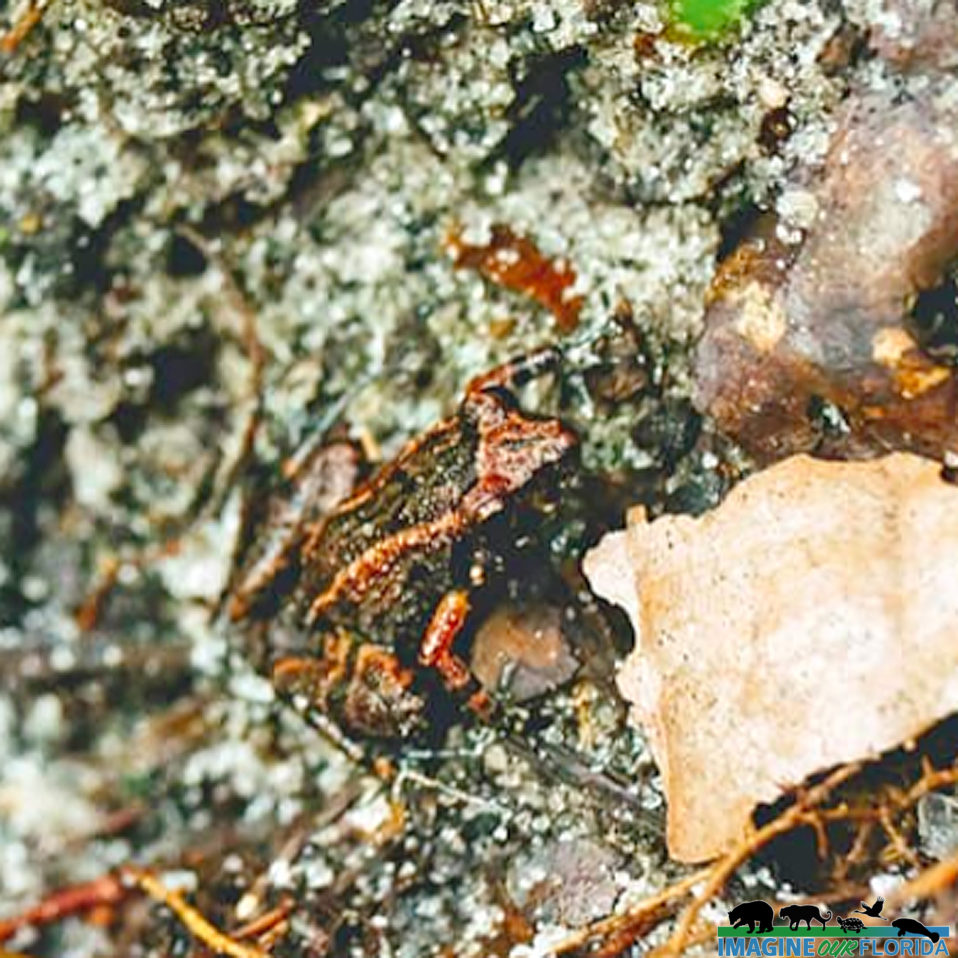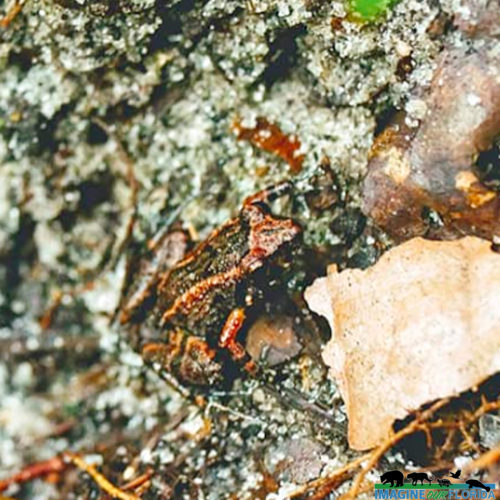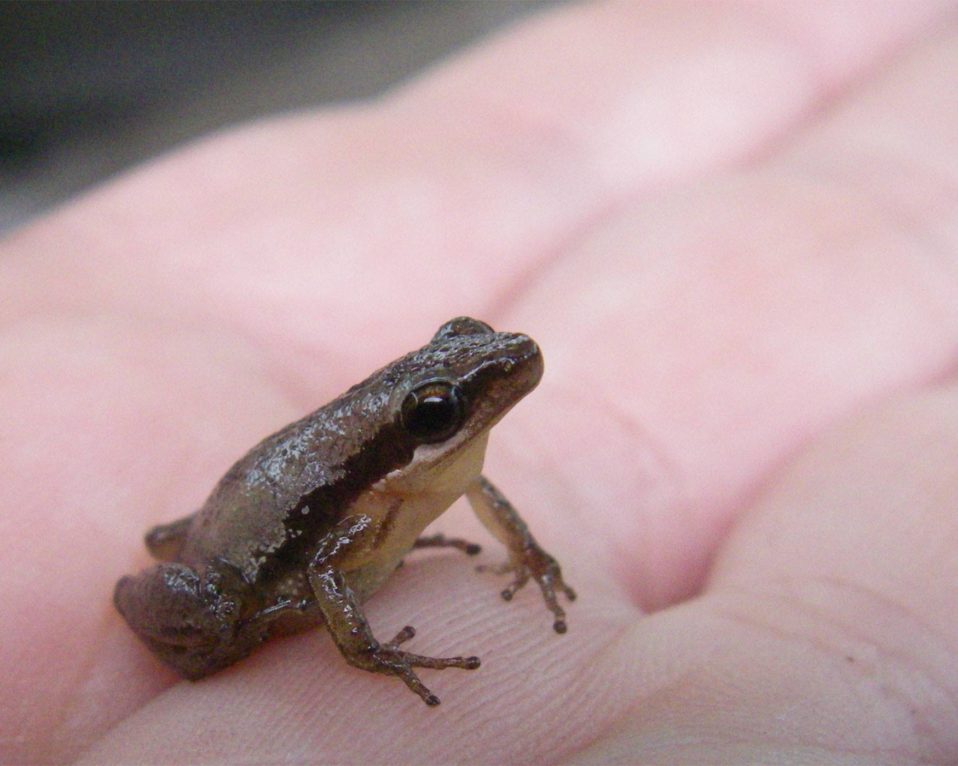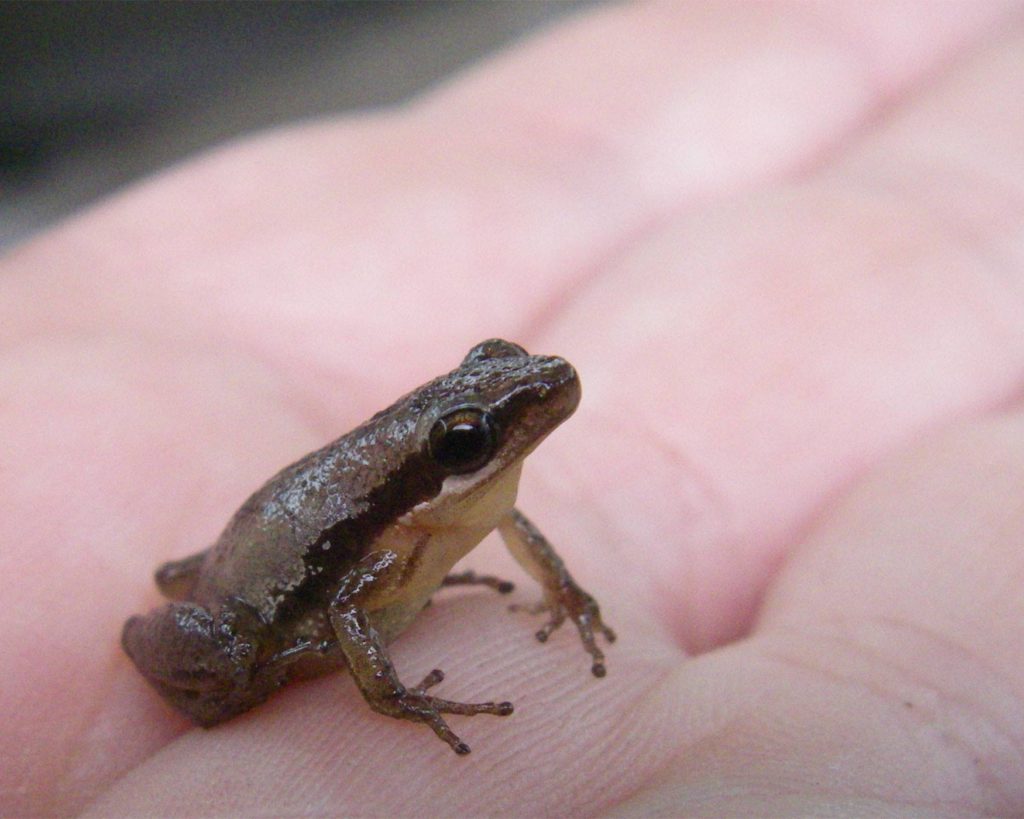Greenhouse Frog
Little Grass Frog
The Little Grass Frog (Pseudacris ocularis), is the smallest of frogs. They are only 1/2 an inch long and range in color from light beige to dark brown and tan. They have dark eye strips extending along the side of the body and thin white strips above the lip and below the eye. Their pads are tiny and their long toes are slightly webbed. Despite the frog’s size, The Little Grass Frog can jump 20 times its body length.
The Little Grass Frog will lay between 1 to 25 creamy brown eggs on vegetation or submerged debris. The eggs hatch in less than 2 days. From tadpole to frog, metamorphosis lasts only 10 days.
Look for the Little Grass Frog in wet prairies and flooded grassy meadows. They are active during the day and can be found climbing among the grasses.
Listen for The Little Grass Frog’s high-pitched chirp in grassy areas. It is difficult to hear. If you hear the chirping, it is usually at night when the humidity is high or when it is raining.
To hear the Little Grass Frog call go to:
https://srelherp.uga.edu/anurans/sounds/pseocu.mp3





Recent Comments